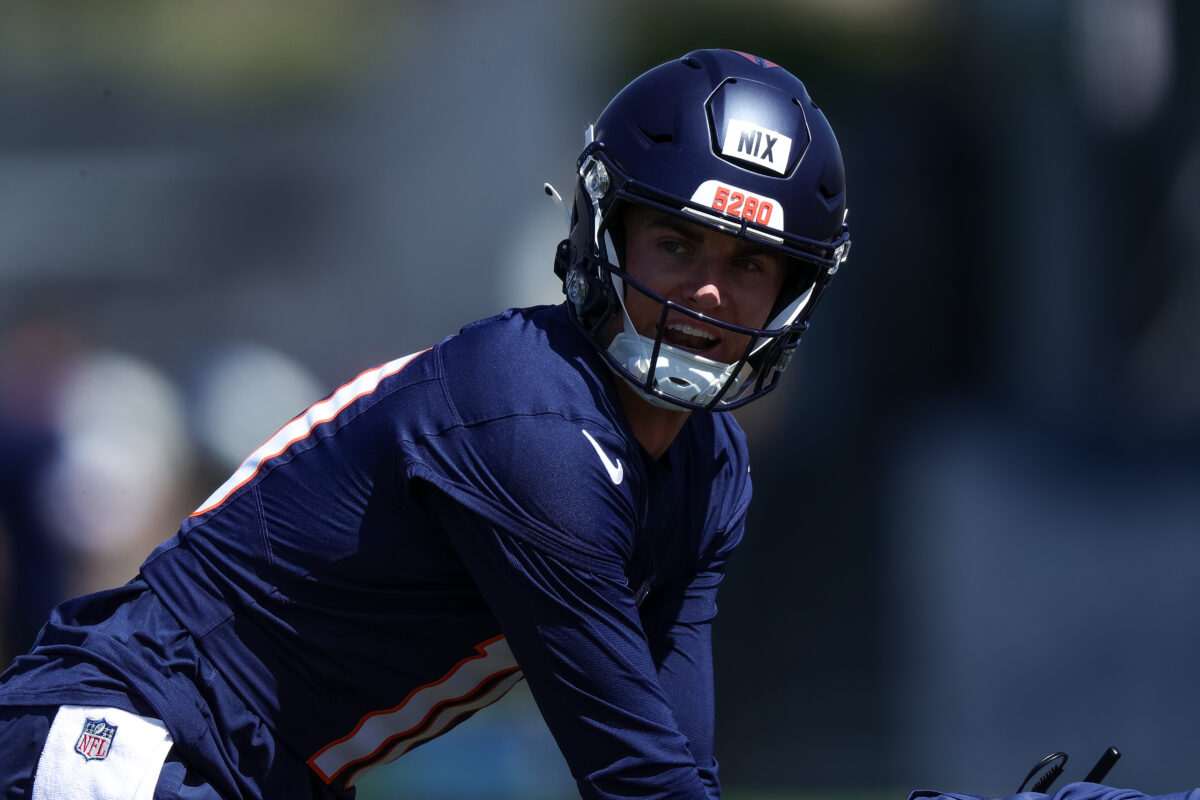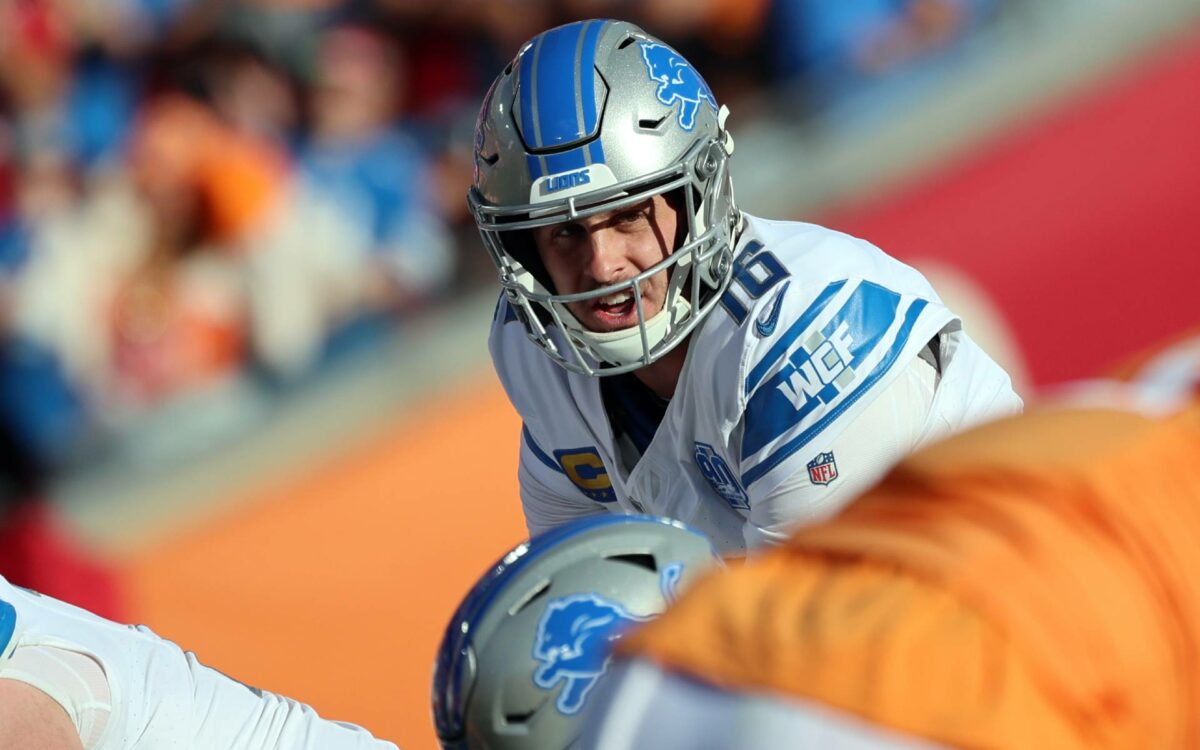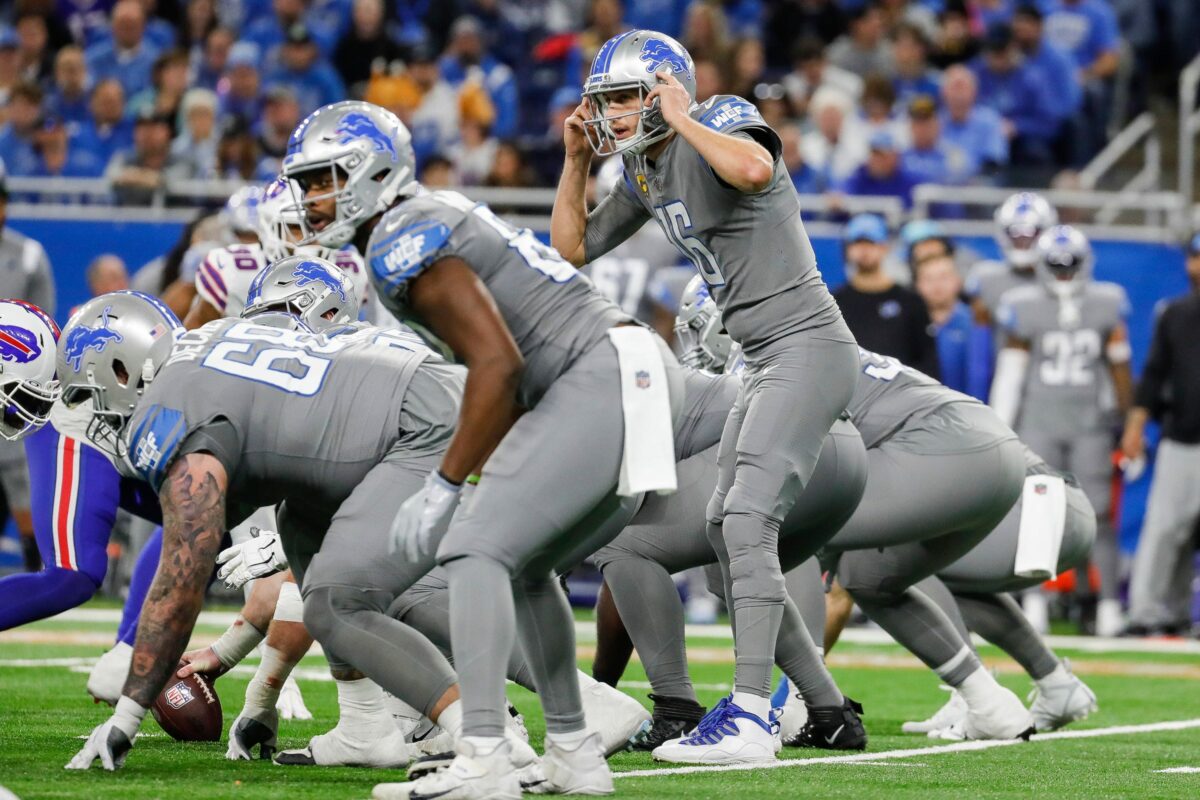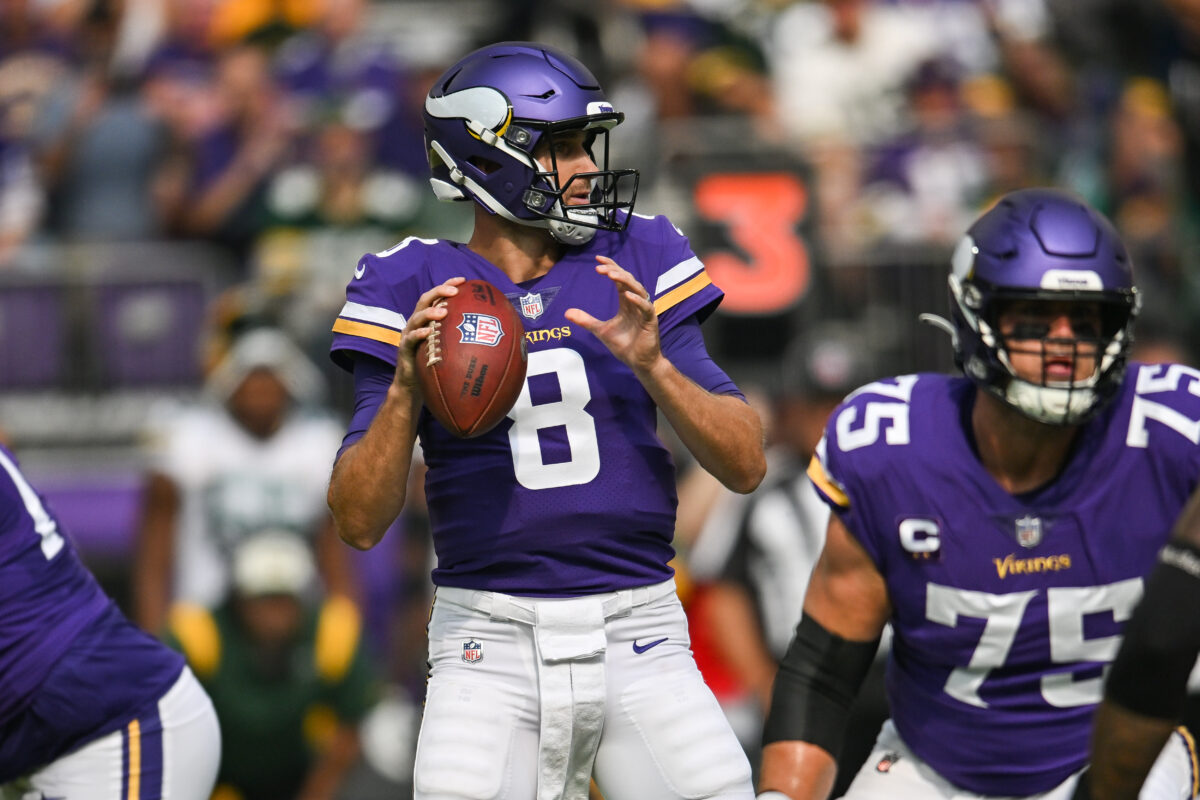The Dallas Cowboys lost a disheartening contest to a New England Patriots team that hasn’t lost at home in years. The Cowboys fell to 6-5, but they still remain one game ahead of the Philadelphia Eagles in the NFC East.
Dallas played from behind for most of the game and the offense didn’t score a single touchdown, but Dallas offensive coordinator Kellen Moore still managed to call a balanced game.
The Context
This weekly look at the play calling began as a simple question: would the new “offensive mind” hired by Cowboys owner Jerry Jones be less predictable than the previous coordinator, Scott Linehan.
Linehan was predictable in the most basic of ways. He called running plays more than 80% of the time that quarterback Dak Prescott took the snap from under center, and he called passing plays on more than 80% of the snaps that Prescott was in the shotgun.
This is an ongoing attempt to assess whether Moore is less predictable than Linehan in terms of the above mentioned concepts.
You can read the stats and analysis from previous games here.
The Raw Data from Week 12 versus the New England Patriots
Dallas ran 62 offensive plays against the Patriots. Cowboys quarterback Dak Prescott took 24 snaps from under center and 38 in the shotgun.
Against New England in Week 12, Moore called 24 running plays, 28 pass attempts, and 10 passes off play-action.
First half snaps from under center
Dallas ran 35 plays in the first half. Prescott was under center for 16 of those 35 plays.
Of the 16 snaps from under center in the first half:
- 10 were runs
- two were pass attempts after a straight drop back
- four were pass attempts off play-action
First half snaps from shotgun:
Prescott was in the shotgun for 19 plays in the first half.
Of the 19 snaps from the shotgun:
- six were runs
- 10 were passes
- three were pass attempts off play-action
A few things stand out about the first half.
Despite the success Prescott has had throwing the ball from the shotgun in previous weeks, Moore went back to a more traditional notion of balance in the first half: Prescott took 45.6% of the snaps from under center.
For Cowboys fans, it was a rare half of football in at least one way: Moore achieved a genuine balance in formation (16 under center and 19 from the shotgun) and run/pass distribution (16 runs, 12 passes, and seven pass attempts off play-action), but the offense was not effective at scoring points (a mere six in the half).
Moore is back to calling a lot of passes off play-action. In the first half, seven of the 19 pass attempts came off play-action (36%).
Snaps from under center in the second half
Dallas ran 27 offensive plays in the second half.
Prescott was under center for eight of those snaps.
Of the eights snaps taken from under center:
- six were runs
- two were pass attempts off play-action
Snaps from the shotgun in the second half
Of the 19 snaps taken in the shotgun in the second half:
- two were runs
- 16 were pass attempts
- one was a pass attempt off play-action
Dallas was not as balanced in the second half in terms of the formation (eight snaps under center and 19 in the shotgun) or the run/pass distribution (eight runs, 16 passes, and three pass attempts of play-action).
As is often the case in the second half, the rushing attempts go down, the shotgun snaps and pass attempts go up.
They went from seven play-action passes on 35 plays in the first half (20%), to just three attempts on 27 second-half plays (11.1%).
The one explosive play by the Cowboys offense was the 59-yard catch-and-run reception by wide receiver Randall Cobb. That play came off play-action on a second-down play when Prescott was under center.
Totals for the game
Moore called 62 offensive plays in Week 12. The only time the Cowboys have run fewer offensive plays once this year was the 57 they ran against New Orleans Saints in Week 4.
Moore called 24 runnings plays:
- 16 when the quarterback took the snap from under center
- eight when the quarterback was in the shotgun
Moore called 38 pass attempts:
- two after the quarterback dropped back from under center
- six off play-action from under center
- 26 from the shotgun
- four off play-action form the shotgun
Conclusions:
- Moore’s unit only scored nine points in Week 12. No one wins many football games without scoring a touchdown.
The thing that stands out the most is the difference in the play-calling in the second half. Moore called for the shotgun on 70% of the snaps in the second half (19 of 27 or 70%) compared to just 54% in the first-half (19 of 35).
Moore also called more passing plays in the second half: 19 passes to eight runs (passing on 70.3% of the plays). In the first half, it was 16 runs and 19 pass attempts (passing on 54% of the plays).
This is the startling thing: even with all the shotgun formation and extra passing in the second half, the Cowboys actually gained more yards, earned more first downs, and scored more points in the first half.
2. Unfortunately, this was yet another game with no designed runs for Prescott. Given the success Prescott has had running the ball this season, it is disappointing that Moore has not scripted a few runs for Prescott in every game.
To my knowledge, no one has asked Moore to explain why there are not more designed runs for his quarterback. Someone should.
3. On a potentially more positive note: Moore did avoid the predictability that was so common under former offensive coordinator Scott Linehan – at least when Prescott was under center. He called runs on just 66.6% of the snaps Prescott took from under center (16 of 24).
When it came to calls from the shotgun, Moore was close to Linehan’s run/pass ratio: he called passes on 78.9% of the shotgun plays (30 of 38).
Moore, for much of 2019, has been able to evade Linehan-like predictability when the quarterback is under center. He rarely has a problem finding a way to pass more than 20% of the under-center snaps.
However, the Cowboys’ run/pass ratio is much more like Linehan when Prescott is in the shotgun; Moore has struggled to consistently call running plays on more than 20% of the shotgun snaps.
Is throwing so much from the shotgun a part of Moore’s general philosophy, or is it more indicative of the Cowboys being forced to throw the ball from the shotgun because they have been losing games?
4. Definitely more positive: Moore is back to calling a lot of play-action passes. After using play-action frequently in the first three games, Dallas got away from using it for a few weeks.
More than a 25% of Prescott’s pass attempts against New England came off play-action (10 of 38).
Moore has called 10 or more play-action passes in the last five games.
Miscellaneous Observations
- Since 2018, the Cowboys are 9-1 against the NFC East and 7-10 against the rest of the NFL. Of those seven victories, only one has come against a team with a winning record (the Saints last year). The total is two if you include the Seahawks in the playoffs.
- Has Jason Witten ever dropped two passes in one game before?
- The Patriots were 3-14 on third-down conversions (21.4%). Opponents have converted just 43 of their 137 third-down attempts (31.3%). Dallas is third in the NFL for third-down defense (behind the Patriots and the San Francisco 49ers).
- The Cowboys were terrible converting their own third downs; they converted just twice on 13 attempts. They are now 65-134 for the season, which drops them below 50%, and makes them the second best offense in the NFL at converting third downs (behind the Baltimore Ravens).
- The disappearance of wide receiver Amari Cooper was impossible to miss if you watched the game and heard the commentators.The post about his split-stats for road games compared to home games is a must-read.
The Cowboys don’t have much time to wallow in the loss to New England, for they must prepare to face the Buffalo Bills and their stingy defense on Thanksgiving Day.
You can follow on Twitter here.
[vertical-gallery id=635321][vertical-gallery id=635041][vertical-gallery id=634743][lawrence-newsletter]






